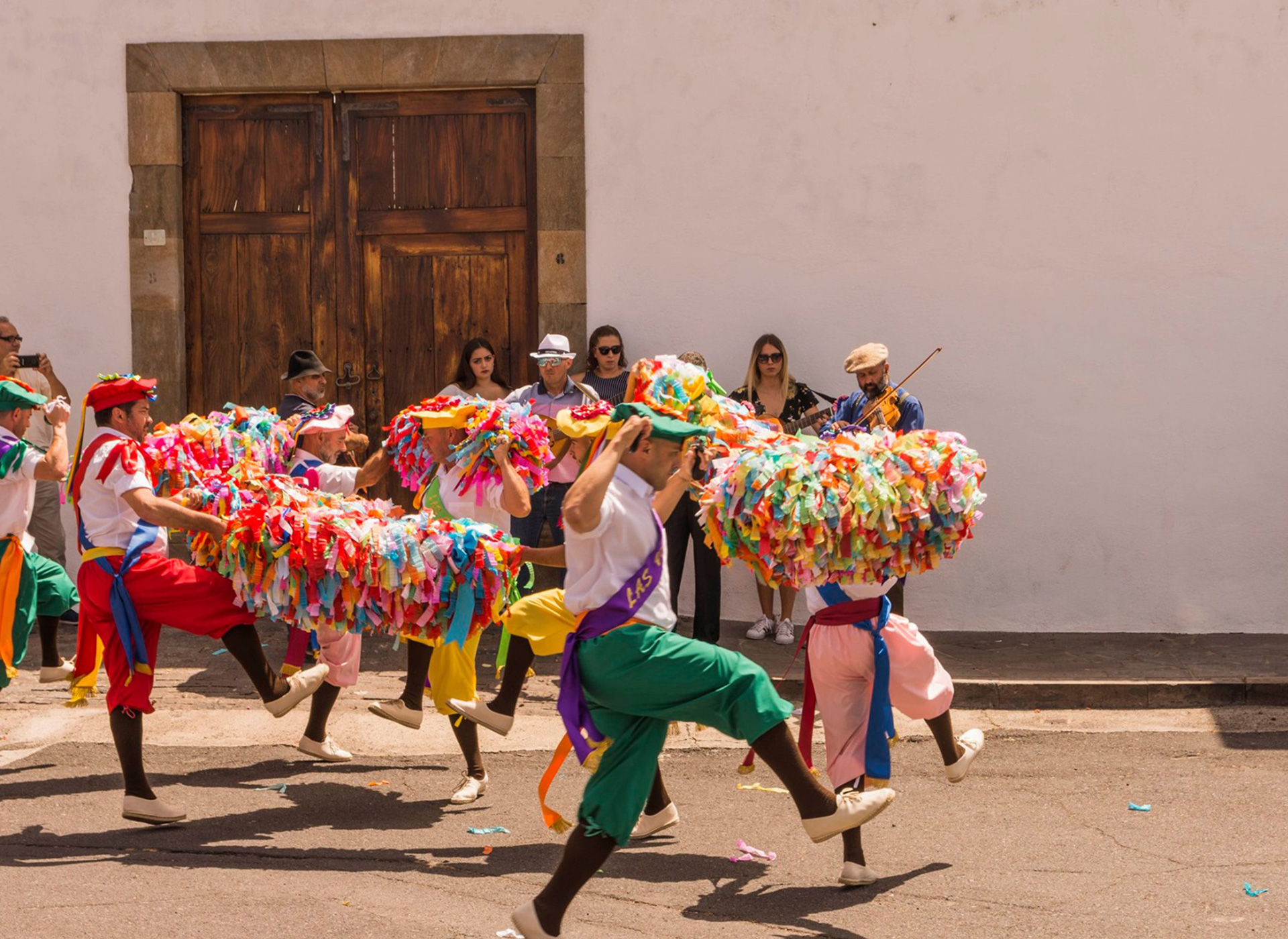
The San Antonio de Padua Cultural Association
The San Antonio de Padua Cultural Association was created in 1990, integrating a number of people who had formed part of various musical, cultural and folkloric groups, which since 1975, in some cases, have been dedicated to the rescue, dissemination and teaching of music and popular culture and traditions of the Canary Islands.
During the time of operation of this association, the Association has travelled around the geography of our archipelago, taking its work wherever it has been required, taking part in pilgrimages, religious celebrations, folkloric exhibitions and an endless number of cultural activities.
In addition to the aforementioned cultural activities, the association also carries out charitable work visiting centres for the sick and elderly, to whom they bring not only the joy of traditional music and dance, but also food, clothes and supplies to improve their quality of life, within the limited economic possibilities that the Association itself has, but which, through the postulation among their friends and acquaintances, have always been able to contribute a grain of sand to try, as far as possible, to improve these situations which, unfortunately, are becoming more and more numerous.
It is worth mentioning, in this sense, the regular visits twice a month to the 'Santa Rita' Centre for the Elderly, founded by the late Father Antonio, to which the Association goes, with its own means and disinterestedly, at Christmas and New Year, to spend some time with all its users and try to make them have a moment of joy and forget about the problems that beset them. And also the visits, in the same vein, to the 'Hermanos de la Cruz Blanca' Centre in San Miguel.
We must also mention the presence of the Association, for many years, in the Basilica of Our Lady of Candelaria at Christmas and New Year; the participation in the annual offering to the Patron Saint of the Canary Islands, representing for many years the municipality of Granadilla de Abona and also the Cabildo Insular de Tenerife.
Presence, in representation of Granadilla de Abona, in the Pilgrimage Offering to the Virgen del Pino, in Teror, Island of Gran Canaria, for many years, going to this event with their own means, without receiving any kind of help for their travel, except for the allowances and accommodation that the City Council of Teror has always provided to the Association. The participation in our municipality, in the Taifa dances, the pilgrimage in honour of San Antonio de Padua, for more than 40 years, as well as in the pilgrimages of San Isidro, and in Charco del Pino, in honour of San Luis Rey, and lately in the Romería Barquera which is celebrated in El Médano.
A work of rescue and, above all, dissemination of our culture, without profit, for many years, an effort that is rewarded with the applause and recognition that this Association has always had, by the local and insular administrations, and above all, by the public and the people.
Las Vegas Varas Dance Cultural Association
The Danza de Varas de Las Vegas is a ritual dance that is celebrated in the village of the same name, in the south of the island of Tenerife, every 26th of July. This dance is made up of seven dancers who, joined by palm sticks lined with coloured paper, perform different figures. The peculiarity of the dance is the sticks and the musical touch, which makes it unique in the Canary Islands. The dance is accompanied by a group of players made up of stringed instruments, which adapt to the step of the dancers. This dance and its music have been performed in the small village of Las Vegas, accompanied by its inhabitants and former neighbours, only one day a year since time immemorial.
Danza de Varas de Chimiche
The Danza de Varas de Chimiche is the only dance expression of the Archipelago in which decorated sticks are used for its execution. This dance is still danced in the villages of Las Vegas and Chimiche on the occasion of their festivities, opening the midday processional procession. It originates from the Iberian Peninsula and must have been introduced to the area by a family of settlers.
The dance is played with a stringed instrument and violin, the latter being incorporated later. Its rhythm is set by the clapping of the chácaras played by the last two of the dancers, known as chacareros. Its melody is monotonous and continuous, keeping a certain relationship with the waltz. Throughout the dance, the dancers perform elegant movements and varied figures, such as the paso de vara, the star, the zig-zag or the paso del arco.
The Varas de Chimiche dance originates from the Las Vegas, when they moved and settled in the Chimiche area. The dance was passed down from father to son.
There are seven dancers in the Varas de Chimiche dance: 3 couples and a leader.








